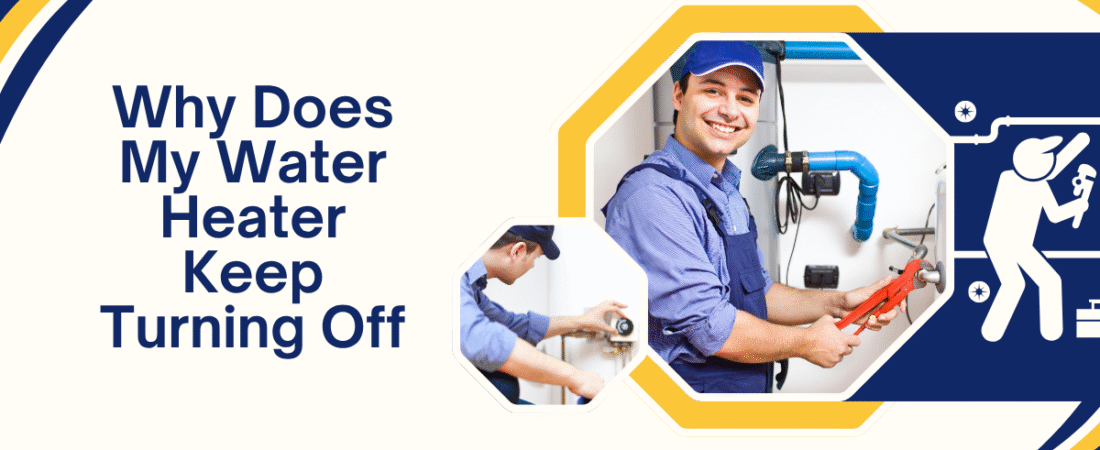1. Introduction
I stood in a silent hallway and heard a click. The shower went cold in a breath. Steam faded from the mirror. That small click ended comfort and started worry. The heater restarted, then stopped again. The pattern felt random and tiring. I wanted a clear reason and a calm fix.
Homeowners across many buildings felt the same. The heater worked, then it quit. Mornings turned chaotic. Bills rose with no improvement. To be honest, the stress built up fast. This guide explained the common causes and the practical steps. It kept safety first and used plain language.
2. Problem Section
The core problem often sat inside three areas. Heat control failed. Fuel or power dropped. Safety parts tripped to prevent damage. Any of these made the heater stop. People tried to guess the cause. Guessing wasted time and money. It broke trust in the system at home.
Gas units faced issues with the pilot, thermocouple, or flame sensor. Electric units faced failing elements or a tripped high limit switch. Both types struggled with heavy sediment in the tank. Scale trapped heat and pushed temperatures up. The safety cut off reacted and shut the unit down. That cycle repeated until someone fixed the root.
Vent or airflow limits created more stops. Blocked flues, dirty intake screens, or tight closets reduced oxygen. Burners ran poorly. Sensors read unsafe conditions. The control board cut power. The stop felt sudden because the machine protected itself.
3. Agitate the Problem
Ignoring the stops made risk grow. Scalding, leaks, or gas hazards followed bad maintenance. Repeated short cycles punished parts. Elements burned out early. Valves wore down. Sensors turned unreliable. Energy use climbed while comfort fell. The house felt colder and the wallet felt lighter.
Delays also hurt schedules. Warm water ran out mid shower or mid dish load. Guests noticed. Kids complained. To be honest, patience thinned. Small issues that cost a little turned into large jobs that cost a lot. The longer the wait, the bigger the repair.

4. Solution Preview
The fix started with a simple plan. Check power and reset safely. Remove sediment. Restore airflow. Test the control parts that govern flame or heat. Replace weak components with approved ones. When gas or electrical risks appear, call a licensed pro. This path brought the unit back to steady work. It also extended its life.
I laid out the causes and solutions step by step. Each one connected to the next. The aim stayed clarity and safety over quick hacks. Your home deserved that care.
5. Main Content
Overheating from sediment build up
Sediment settled on the tank bottom and formed a thick blanket. Heat trapped under that layer spiked water temperature. The high limit switch tripped to protect the tank. The heater shut off. Flushing the tank lowered sediment and eased the stress. Regular flushing kept this from returning. A simple drain and refill often helped a lot.
Faulty thermocouple or flame sensor in gas units
The thermocouple proved that the pilot burned. If it failed, the gas valve closed. The burner turned off and stayed off. A dirty flame sensor did the same with modern igniters. Cleaning with gentle care restored reading. Replacing worn parts restored reliability. These parts stayed small but important.
Pilot or ignition trouble
Weak pilot flame, dirty orifice, or poor ignition control made the burner stop. Drafts near the heater blew out the flame. Poor placement inside a tight closet starved the flame for air. Fixing the draft and ensuring enough room for air solved many stops. A steady pilot meant steady heat.
Tripped high limit switch
This safety switch reacted to too much heat. It shut power to the elements in electric units. It also shut controls in many gas units. Resetting worked once, but a repeat trip signaled a deeper issue. Usually sediment, bad thermostat, or stuck relay caused the heat spike. Replace the failing part after diagnosis.
Heating element failure in electric units
Elements cracked or shortened with age. The unit heated for a moment, then the breaker or internal fuse opened. Testing with a meter confirmed the issue. Replacing the element restored output. Tight connections and proper gaskets prevented leaks.
Venting and combustion air issues
Bird nests, soot, or crushed vent pipes restricted exhaust. The system sensed danger and shut off. Cleaning the vent path brought back normal burn. Indoors, blocked intake screens or sealed doors kept oxygen low. Adding proper grills or spacing improved airflow and safety.
Power supply and wiring faults
Loose wires, tired relays, or a weak breaker cut power randomly. The heater turned off without warning. Tightening connections and replacing faulty devices fixed the cutouts. Electric work needed care. If a burning smell appears, stop and call a pro.
6. Actionable Framework or Steps
First, make it safe. Turned off gas or power. Waited for the tank to cool. Second verified power. Checked the breaker and the dedicated switch. Third, pressed the reset on the high limit once. If it tripped again, I stopped and found the cause. Fourth flushed the tank to remove sediment. Fifth restored airflow by clearing vents and intakes. Sixth tested ignition parts. Replaced the thermocouple or cleaned the flame sensor. Seventh checked thermostats and elements on electric units. Each step built on the last and avoided guesswork.
7. Case Study or Real Example
A small apartment unit shuts down every morning. The owner kept pressing reset. Warm water returned, then failed again. I inspected the closet and found the door sealed tight. There was no cutout for air. The pilot burned weak and orange. The flame sensor read poorly. The vent cap outside also held a wad of lint.
We added a louver panel for air. We cleared the vent cap. We cleaned the sensor and confirmed steady ignition. The unit ran through six full cycles without a stop. Morning showers stayed warm. The power bill dropped a bit the next month. The fix looked simple after a calm check.
8. Pros and Cons
| Option | Benefit | Trade off |
| Regular flushing | Reduced overheating and noise | Needed time and a hose |
| Replace thermocouple | Cheap and reliable | Gas work needed care |
| Clean flame sensor | Restored steady ignition | Needed yearly repeat |
| Improve airflow | Safer burn and stronger flame | May require closet changes |
| Replace elements | Full heat restored | Parts and drain time |
| Call a pro | Safe, fast diagnosis | Higher immediate cost |
9. Conclusion
The heater shut offs did not happen by chance. They came from preventable causes. Sediment, weak sensors, bad airflow, or tired elements sat behind most stops. A steady plan found them and fixed them. Your home then returned to warm, quiet mornings. The unit worked less hard and lasted longer. Peace in the hallway returned with every click that stayed on.
10. Call to Action
If your heater turns off again, start the safe checks today. Flush if sediment builds up. Clear vents. Clean the sensor. Replace small parts with approved ones. When gas smells, sparks, or confusion appear, pause and bring in a licensed pro. You protected the house and your budget by acting early.
11. FAQ
I used short questions here because an FAQ format helped readers find exact fixes fast.
Q Did a heater turn off from high temperature
A Yes the high limit switch tripped to protect the tank
Q Did sediment cause frequent shut offs
A Yes heavy scale trapped heat and forced a stop
Q Did a weak pilot light cause random stops
A Yes low flame failed the sensor and closed the valve
Q Did electric units have a common failure
A Yes burned elements and loose wiring caused repeat cutouts
Q Did vent issues matter in mild weather
A Yes blocked vents still forced safety shutdowns anytime
12. Internal and External Links
For safe steps read local utility safety pages on gas and electric heaters. For deeper parts guidance review manufacturer manuals for your exact model. For routine care follow community guides on tank flushing and vent cleaning. These resources supported a careful repair plan.

